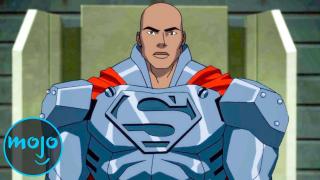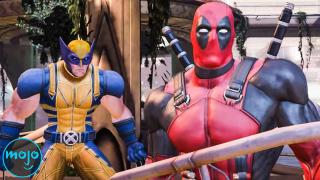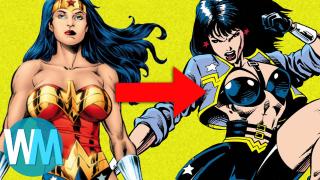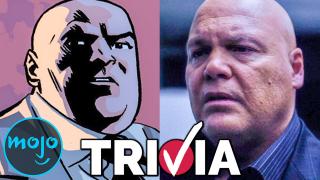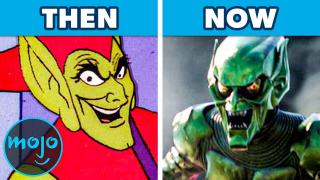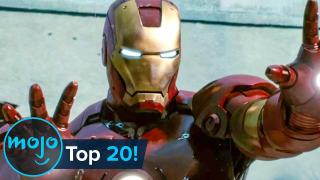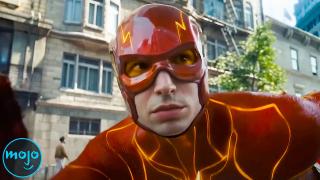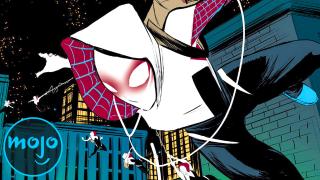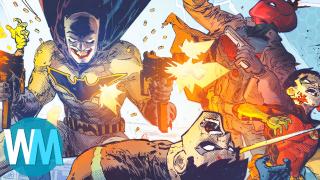Top 10 Iconic Superhero Redesigns
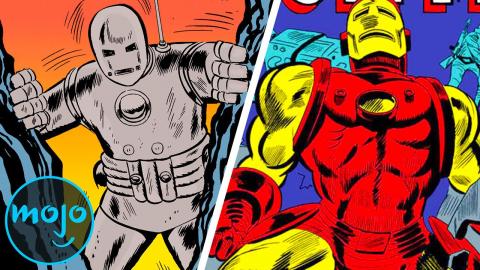
For this list, we'll be looking at redesigns of superheroes which became more recognizable than their predecessors. Not only will we be including costume redesigns, but entire character redesigns as well, so reboots of pre-existing characters are fair game. We'll also be including major redesigns of characters that occurred behind the scenes.
Have an idea you want to see made into a WatchMojo video? Check out our suggest page at http://WatchMojo.comsuggest and submit your idea.
#10: Black Widow
Top 10 Black DC Superheroes
Black Widow’s first costume circa 1964 left a little to be desired. Looking alarmingly similar to the Golden Age Catwoman, Don Heck’s original Black Widow outfit may have worked for a formal costume party but wasn’t exactly practical for fist-fights with superheroes. That all changed when artist John Romita Sr. redesigned Black Widow’s costume in 1970. This new look traded in the fishnets for a skin-tight black bodysuit that was resistant to bullets and extreme temperatures. It also included her soon-to-be-famous bracelets which housed grappling hooks, gas pellets and her signature “Widow’s Bite” electric blasters.
#9: Beast
When Beast debuted as a member of the original X-Men team, he essentially looked like a normal human with abnormally large hands and feet. Although Beast would go through several costumes during his “human” phase, his most iconic look wouldn’t appear until he left the X-Men and began a solo superhero career. After drinking an experimental serum designed to alter his appearance, Beast eventually sprouted fur, fangs, and claws upon prolonged exposure. Although it was originally gray under artist Tom Sutton, Beast’s fur eventually became blue and completed the transition into his most recognizable look thanks to the of Tom Sutton. Despite undergoing several more mutations throughout his history, Beast’s fuzzy blue form has become a staple of the character.
#8: Wolverine
Top 10 Times Deadpool and Wolverine Teamed Up
When he first debuted in the pages of “The Incredible Hulk”, Wolverine’s mask featured cat-like ears and whiskers which weren’t exactly intimidating. Upon his transition to the X-Men a year later in the pages of Giant-Size X-Men #1, cover artist Gil Kane took some liberties with John Romita Sr.’s original design. As the now legendary story goes, while he kept most of the costume the same, Kane accidentally lengthened the ears on Wolverine’s mask and removed the whiskers altogether. Oddly enough, the book’s artist and inker Dave Cockrum was so enthusiastic about what he thought was an intentional redesign that he changed the artwork to match it. The rest is history.
#7: The Hulk
Top 10 Superhero Costume Blunders
Stan Lee originally envisioned the Hulk as having gray skin as he thought gray was a “scary” color befitting a monster. However, limitations with the printing technology of the time prevented the Hulk from remaining a consistent shade of gray throughout his debut issue. As a quick remedy, Lee decided to change the Hulk’s skin from gray to green, and the Emerald Giant was born in earnest by issue 2. Despite being a last-minute change, the Hulk’s green skin became his trademark and remained such until the Gray Hulk was brought back in 1984. Interestingly, the Gray Hulk was retconned to be a separate personality from the green Savage Hulk and would go on to have his own adventures as a Las Vegas bouncer named Joe Fixit.
#6: Daredevil
Top 10 Daredevil Season 3 Easter Eggs
Jack Kirby’s genius gave us countless Marvel icons, but his original costume for Daredevil was one of his rare missteps. Daredevil’s look in his first six issues featured a bright yellow and red suit which was a little too garish for its own good. Artist Wally Wood corrected this by recoloring Daredevil’s costume to the now-iconic blood red. Another example of how relatively small changes can have a huge impact, this darker color scheme was a much better reflection of the grimmer character Matt Murdock would become in later years in the hands of Gene Colan and Frank Miller.
#5: Green Lantern
Evolution of Green Goblin
Aside from the name, Alan Scott had little in common with the Green Lanterns that came after him. First appearing in 1940, the original Green Lantern wore a red, purple and green costume and had a weakness to wood. In 1959, DC legend Julius Schwartz reinvented Green Lantern as Hal Jordan, a test pilot-turned-intergalactic police officer. It was this incarnation of the character that spawned the familiar Green Lantern mythology involving the Guardians of the Universe, the Green Lantern Corps and their power rings’ weakness to yellow. Although Alan Scott would later return as a member of the Justice Society, there’s no denying Hal Jordan was a massive improvement on his predecessor’s legacy.
#4: Iron Man
Top 20 Greatest Iron Man Armors
Iron Man’s original armor didn’t exactly scream “cutting edge”. Constructed in a Vietnamese prison camp, Tony Stark’s first suit was a bulky and slate gray with little of the sleek polish his later suits would possess. By his second issue, Tony made the first step towards progress by painting this suit gold to give it a more heroic look. However, it wasn’t until his ninth adventure in “Tales of Suspense” #48 that we got our first glimpse of the iconic red and gold armor. Needless to say, it was this model which had the most influence on Iron Man armors to come and solidified itself as Shellhead’s classic look.
#3: The Flash
Superhero Origins: The Flash (Barry Allen)
The costume worn by Jay Garrick, the Golden Age Flash, was basically inspired by the Roman god Mercury. The original Flash’s most obvious homage to the messenger god was undoubtedly the winged cap, which would lay the blueprint for the masks worn by future Flashes. Fast-forward to 1956, artist Carmine Infantino redesigned the Flash from scratch and created Barry Allen, DC’s second speedster who wore the now famous red and yellow suit. More influenced by outfits worn by distance runners, Infantino’s new version of the Flash heralded the beginning of the Silver Age of Comics and arguably became the most iconic Flash of all.
#2: Spider-Man
Superhero Origins: Spider-Gwen
Although it was never published, Jack Kirby’s original design for Spider-Man was much different than what readers ended up getting on the cover of “Amazing Fantasy” #15. Although the original drawings have sadly been lost, “King” Kirby’s colleagues recalled the early Spider-Man wearing a Captain America-style half-mask and carrying a gun that fired webbing instead of the famous web-shooters. Despite the novelty of this early look, we feel that the right choice was made when Steve Ditko redesigned Spidey’s costume to the red and blue version that we know and love today.
#1: Batman
Top 10 Alternate Reality Versions of Batman
Arguably the most underappreciated writer in comics history, Bill Finger’s contributions to Batman were overshadowed for decades by co-creator Bob Kane. In addition to creating much of Batman’s world, Bill Finger also played a crucial role in designing Batman’s costume. Bob Kane’s initial design for the Dark Knight featured a blonde Batman in red tights and actual bat wings which bore little resemblance to the character that graced the cover of Detective Comics #27. It was Bill Finger who ultimately suggested changing the red to gray, replacing the domino mask with a pointy-eared cowl, and transforming the wings into a scalloped cape. Hence, Bill Finger played just as much if not more of a vital role in creating Batman than Bob Kane.


